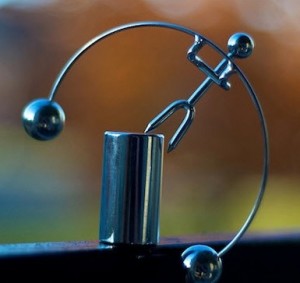@Quora: If most people lose in the stock market or gambling, then would I make money by doing the opposite of the average person?
My answer to If most people lose in the stock market or gambling, then would I make money by doing the opposite of …
Answer by Laurent Bernut:
Statistically speaking, You would be exactly in the same position as the person You go against
There is something called the serenity prayer. Here is a simple adaptation:
Allow me to go with the flow when it is in the right direction
Allow me to stand against the crowd when they are running in the wrong direction
Give the wisdom to know which is whichAn ethousiastic reader commented on an answer I provided about predictive technical analysis, saying that the win rate of Fibonacci and iterations of it such as de Mark have a win rate of around 40%. He said I was an idiot (true) but more importantly if it was the case, people would do the opposite and win (false). While I have rarely been accused of being intelligent, probabilities still do not work like that.
There are three types:
Clear wins
Clear miss
Near miss/win
The third category is between 10 to 30%, 10 for simple (elegant) systems, 30 for simplistic (naive) stuff. So, doing just the opposite of what everyone else does will not make You a hero. Sell Apple short because everyone else is buying will achieve one thing only: provide liquidity for other buyers, thank you very much
How to tilt your trading edge
This is an important point for people who develop systematic automated strategies: improving the trading edge comes from reducing false positives, or moving near wins (small losses) into near misses territory (small wins). The compounding effect of tilting the win rate and the average win has dramatic impact on the overall gain expectancy.
For example, in our strategy, we have introduced a lag in the stop loss, called “French Stop Loss”, because it is fashionably late “bien sur”. This gives additional wiggle rooms to each trade. They can mature and are rarely stopped out. Not all of them succeed however. Some are closed because trend reverts. This is far less costly than stop loss though as trend reversals occur around break even. The number of stop losses has come down by almost 3/4 and now trades are closed around the break even point. This has considerably reduced erosion and has allowed us to increase the number of pairs traded from 12 to 36.


Leave a Reply
Want to join the discussion?Feel free to contribute!